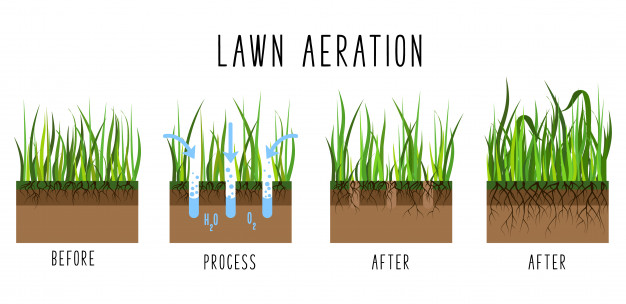Also known as core aeration, spiking, or coring, lawn aeration is the mechanical process of removing unnecessary soil and thatch from the lawn to help in its growth. It helps improve the exchange of air between the lawn and the surrounding atmosphere, reduces water pudding and runoffs, and increases the stress and drought tolerance of the grass. But that’s not all. Lawn aeration is basically the most important thing your garden needs to grow in its full capacity, healthily.
Let’s give you a holistic idea of lawn aeration to help you take better care of your garden.
What is spiking so important for the grass?
In most homes, the topsoil in the garden is generally washed away or buried during excavation or construction, leaving the more compact subsoil for the grass to grow. The landscape experts at HydroDynamicsCorp.com opine that this subsoil can get more compact with running and playing in the lawn, mowing, and irrigation. The clay can get stickier after a period of heavy rainfall as well.
The compact soil prevents the grassroots from growing at their full capacity and making the most of available fertilizers. That’s when aeration comes to their rescue. It helps reduce soil compaction so that the roots can reach deeper and get all the water and fertilizer content that they need for healthy growth and development. As the healthier your grasses are, the more beautiful your lawn will be.
When should you aerate the lawn?
It depends on the type of grass in your lawn. If you have warm-season grass like the Zoysiagrass, you should aerate the soil in the middle of spring or summer. Refrain from aerating it in the dominant season, as it increases the chances of weed growth. Wait for the first spring mowing before going ahead with the coring.
However, cold season grasses, like the perennial ryegrass or the Kentucky bluegrass should be aerated in the fall or early spring. This makes the most of the late-season fertilization process and produces lush green grasses in spring. Regarding the frequency, you should aerate the lawn at least twice in a year, if it’s used extensively. Commercial areas, like golf fields, racecourses, or other sports turf must be spiked more often, at least 4-5 times a year.
Fertilize before or after aeration?
It’s best to fertilize the lawn after coring it thoroughly to improve weed control. If you spread herbicides or fertilizers before aeration, the chemical barriers formed by them may get removed, thus increasing the chances of weed growth. You should also water the grass after coring, especially in the drought-prone areas.
Is that all? Well, no!
Mark the areas having irrigation heads, shallow pipes, wiring, or valve boxes with red flags to prevent damages
Make sure the grass is a little moist during aeration to ensure better penetration
Don’t mow the lawn at least for 2-4 weeks after coring to help the grassroots grow deeper
Don’t overuse chemicals, like herbicides and fertilizers after aeration and help the grassroots grow naturally
If you’re not an expert gardener, you may miss on such intricate details and end up making costly mistakes. Hence, it’s best to abide by the instructions of the professionals, who will do the job for you. Ask them as many questions as you need and get all your doubts clarified to take better care of your lawn post-aeration.
Tammie~

[…] be more comfortable when compared to a similar-sized room without the sunlight. So if you’re re-modelling then consider getting bigger windows and maybe sunroofs. This will help you save up on electricity […]